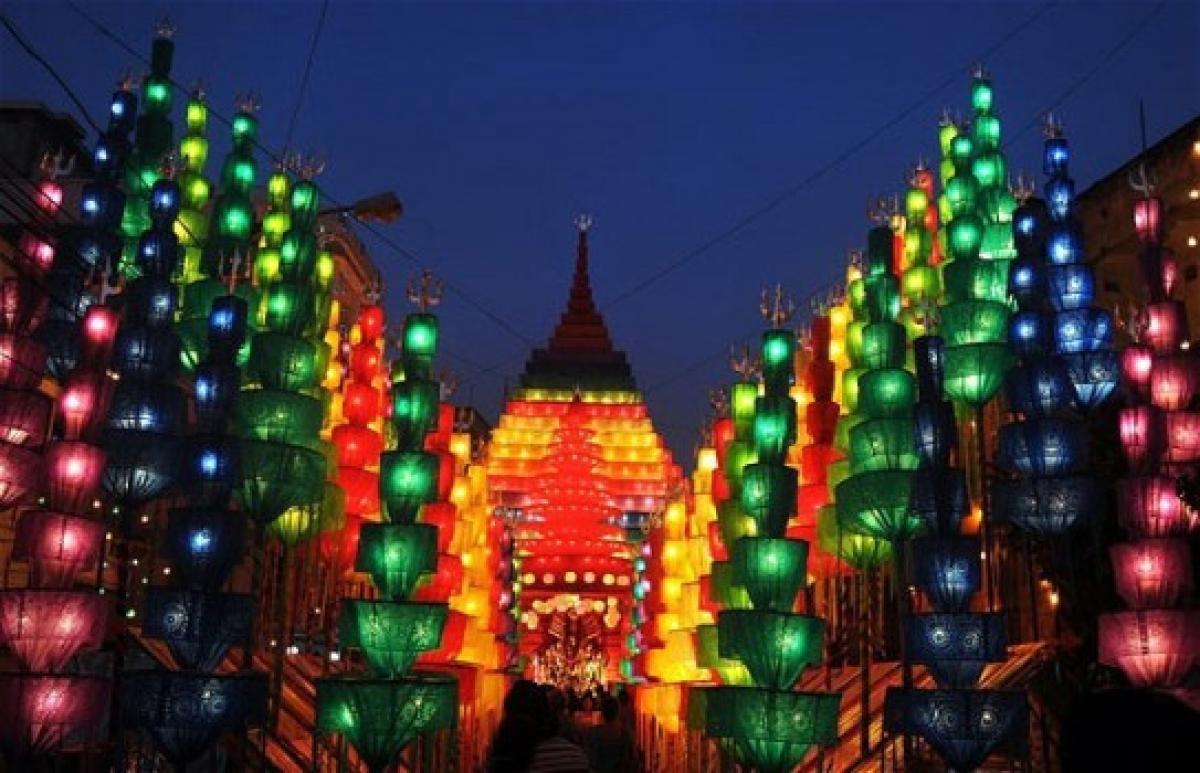Live
- ED conducts raids at two places in Bengal in chit fund case
- BJP Tamil Nadu President Expresses Confidence In Resolving Tungsten Mining Concerns In Madurai
- Karnataka Reviews Lake Safety Ahead of Monsoon: Minister Bhosaraju Tells Upper House
- Udupi MP’s queries, More key highways on high-priority
- Investing in Skills: Education Loans Paving the Way for Career Success
- Ghaggar river’s two stretches identified as polluted: Govt
- ICC chief Jay Shah meets Brisbane 2032 Olympics organising committee CEO
- Oxford Grammar High School Celebrates 44th Annual Sports Day with Grandeur
- Indian banking sector’s health remains robust, govt policy working very well: Top bankers
- iOS 18.2 Unveiled: New Features with ChatGPT Integration Revolutionize Your iPhone
Just In

x
Highlights
One of the biggest events in east India, the Durga Puja serves as a template for virtually all celebrations in West Bengal but in the last couple of years, the Trinamool Congress-ruled state government has \"hijacked\" the festival in a promotional way, says well known author Tapati Guha-Thakurta.
One of the biggest events in east India, the Durga Puja serves as a template for virtually all celebrations in West Bengal but in the last couple of years, the Trinamool Congress-ruled state government has "hijacked" the festival in a promotional way, says well known author Tapati Guha-Thakurta.
.jpg) "They have taken it and have brought politics in a very direct, sensational and promotional way into the event," Guha-Thakurta, a specialist on the art and cultural history of modern and contemporary India, told IANS in an interview.
"They have taken it and have brought politics in a very direct, sensational and promotional way into the event," Guha-Thakurta, a specialist on the art and cultural history of modern and contemporary India, told IANS in an interview.Guha-Thakurta recently launched her new book, "In the Name of the Goddess: The Durga Pujas of Contemporary Kolkata", based on her decade-long research on the "urban festival" and the examination of trends of art and publicity, including interference of politics.
She says the political colour was evident earlier too, but there was "no such direct involvement in it."
"This happened in the last couple of years. Today the face of politicians dominates. It has been hijacked by this particular party... today Mamata competes with Maa Durga and she has latched on to every festival. She runs the whole state in a festival mode," observed Guha-Thakurta, the director and professor in history at the Centre for Studies in Social Sciences.
While the five-day period of the puja is seen as a politically lean one, West Bengal Chief Minister Mamata Banerjee has her hands full.
She embarks on a spree to inaugurate the festivities, numbering up to 250, from big to small, come rain or shine.
In fact in 2013, Banerjee was running fever as she got drenched during the launch activities, but managed to appear at innumerable puja pandals for the opening and at one she was even heard crooning a few lines of the popular Agomoni song (welcome song for the goddess) "Jaago Durga" made popular by Dwijen Mukhopadhyay.
From designing motifs for puja special sarees to visiting old-age homes to the much-publicised reaching-out to Vrindavan widows during the puja, Banerjee has lent her personal touch to the mega celebration.
In contrast, there was a "deep reluctance to merge religion and politics" during the erstwhile Left Front regime, the researcher said.
"There would still be red books stalls set up during puja but there was no overt involvement while the Congress always had a direct involvement with the puja," Guha-Thakurta said.
Through various examples in her book, Guha-Thakurta has shown how the puja has turned secular and transformed into a big-budget festival, influencing politics as well.
"And if you think of the style of politics today, the style of campaign, the style of elections, it's very interesting to see the similarity with pandals and mikes," she said.
"She (goddess Durga) becomes a brand icon for products, art and craft production and there is a lot that happens in her name."
Based on field-research conducted between 2002 and 2012, the book also looks at the blurring lines between religious and secular events with the Kolkata Durga puja becoming an "acemaster event" and a template for pujas elsewhere.
She points out this year the Saraswati puja and Netaji Subhas Chandra Bose's birthday on January 23 were being celebrated the same way.
"One is a so-called religious event and one is a secular event but if you look at the modalities and the kinds of festivities, there is a blur between. All other secular events have taken on the festival mode," she notes.
At the grassroots, the city opens up to the rural areas with artists, sculptors and labourers trickling in for employment during the festive season.
There is also the metamorphosis of the puja from a ritual to a public art enterprise.
"... to use the goddess as an artwork and use the pavilion as an art installation turning it into a public art enterprise," the author added.

Next Story
More Stories
ADVERTISEMENT
© 2024 Hyderabad Media House Limited/The Hans India. All rights reserved. Powered by hocalwire.com







